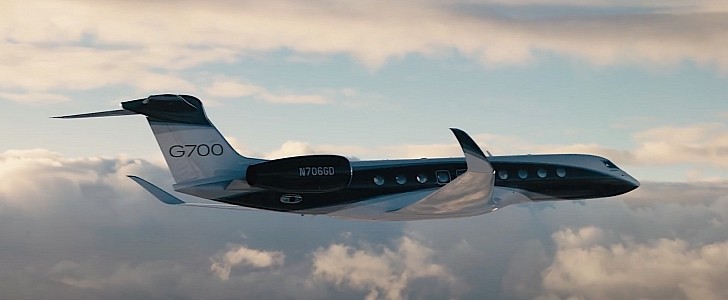In the world of aviation, a city pair comprises the point of origin of the flight and the destination. A fancy way to say route, if you like, only that when it comes to city pair flights, they can be a direct flight with no stops, one with stops here and there, or one with connecting flights.
For a while now, aircraft manufacturer Gulfstream has made a habit of advertising the attributes of its products based on what they're capable of doing while on city pair single flights with no stops. Last we heard of that was back in December last year, when we learned the new G500 and G600 set speed records as they moved from London to Teterboro, New York, and London to Seattle, respectively.
This week, it is the G700 that falls under the spotlight, after it nailed a 4,500 miles (7,240 km) one-way trip from Savannah, Georgia, to Geneva, Switzerland, in just 7 hours and 37 minutes. That boils down to an average speed of Mach 0.9 (691 mph/1,112 kph), which is extremely close to the speed of sound, but also not quite the thing's max speed.
We’ve heard of such feats and speeds before, so that would be nothing truly spectacular, if it weren’t for a nice little detail: the plane achieved this using sustainable aviation fuel (SAF), the magic substance airlines and manufacturers are chasing in their quest to become greener and more cost-effective.
The Gulfstream G700, which made its debut in Geneva with this trip, is described as the aircraft with "the most spacious, innovative and flexible cabin in the industry." Powered by twin Rolls-Royce engines that top out at Mach 0.925, the plane can move up to 13 passengers (or eight, if they plan on sleeping on board) for distances as great as 8,631 miles (13,890 km).
This week, it is the G700 that falls under the spotlight, after it nailed a 4,500 miles (7,240 km) one-way trip from Savannah, Georgia, to Geneva, Switzerland, in just 7 hours and 37 minutes. That boils down to an average speed of Mach 0.9 (691 mph/1,112 kph), which is extremely close to the speed of sound, but also not quite the thing's max speed.
We’ve heard of such feats and speeds before, so that would be nothing truly spectacular, if it weren’t for a nice little detail: the plane achieved this using sustainable aviation fuel (SAF), the magic substance airlines and manufacturers are chasing in their quest to become greener and more cost-effective.
The Gulfstream G700, which made its debut in Geneva with this trip, is described as the aircraft with "the most spacious, innovative and flexible cabin in the industry." Powered by twin Rolls-Royce engines that top out at Mach 0.925, the plane can move up to 13 passengers (or eight, if they plan on sleeping on board) for distances as great as 8,631 miles (13,890 km).







